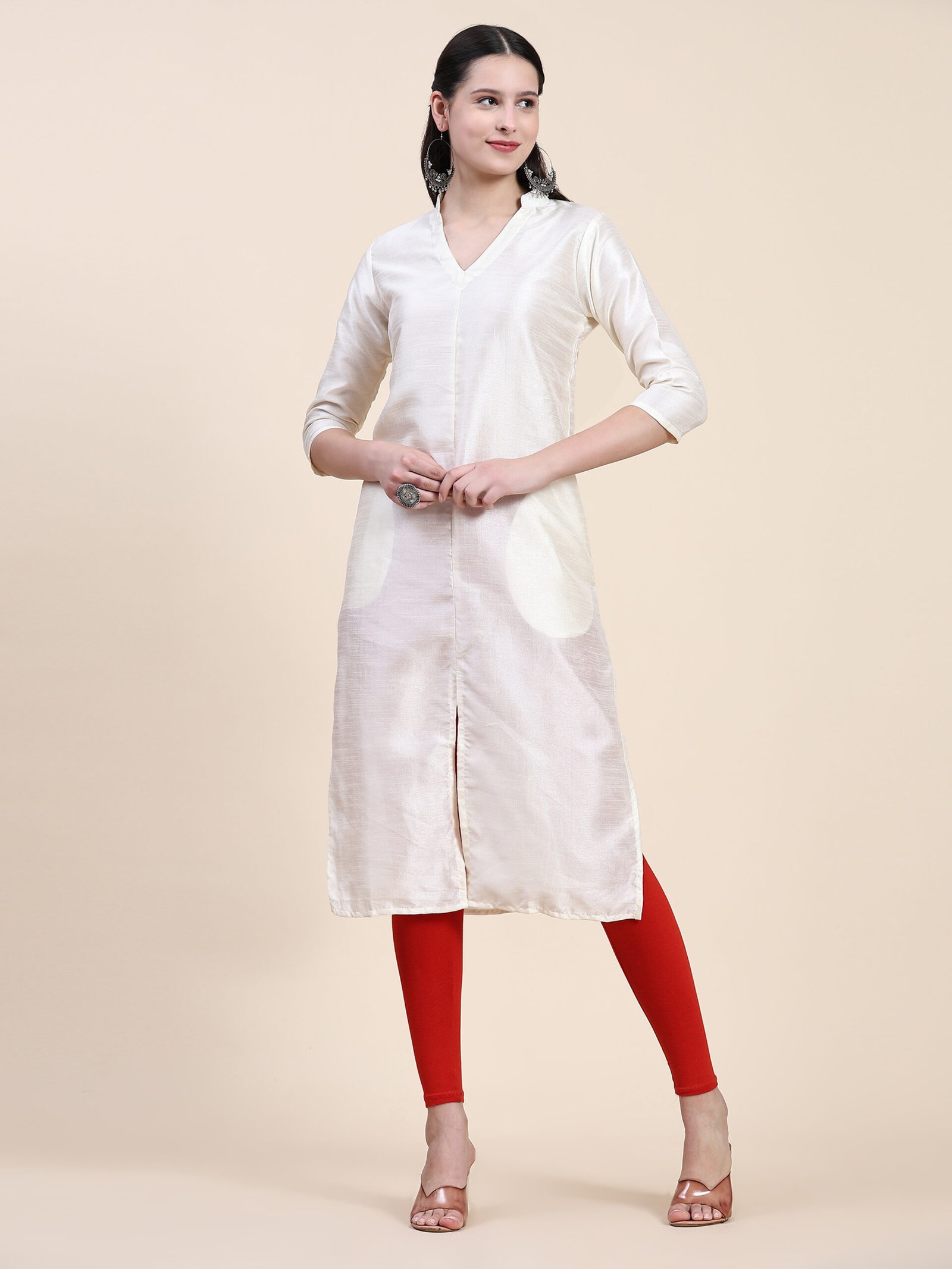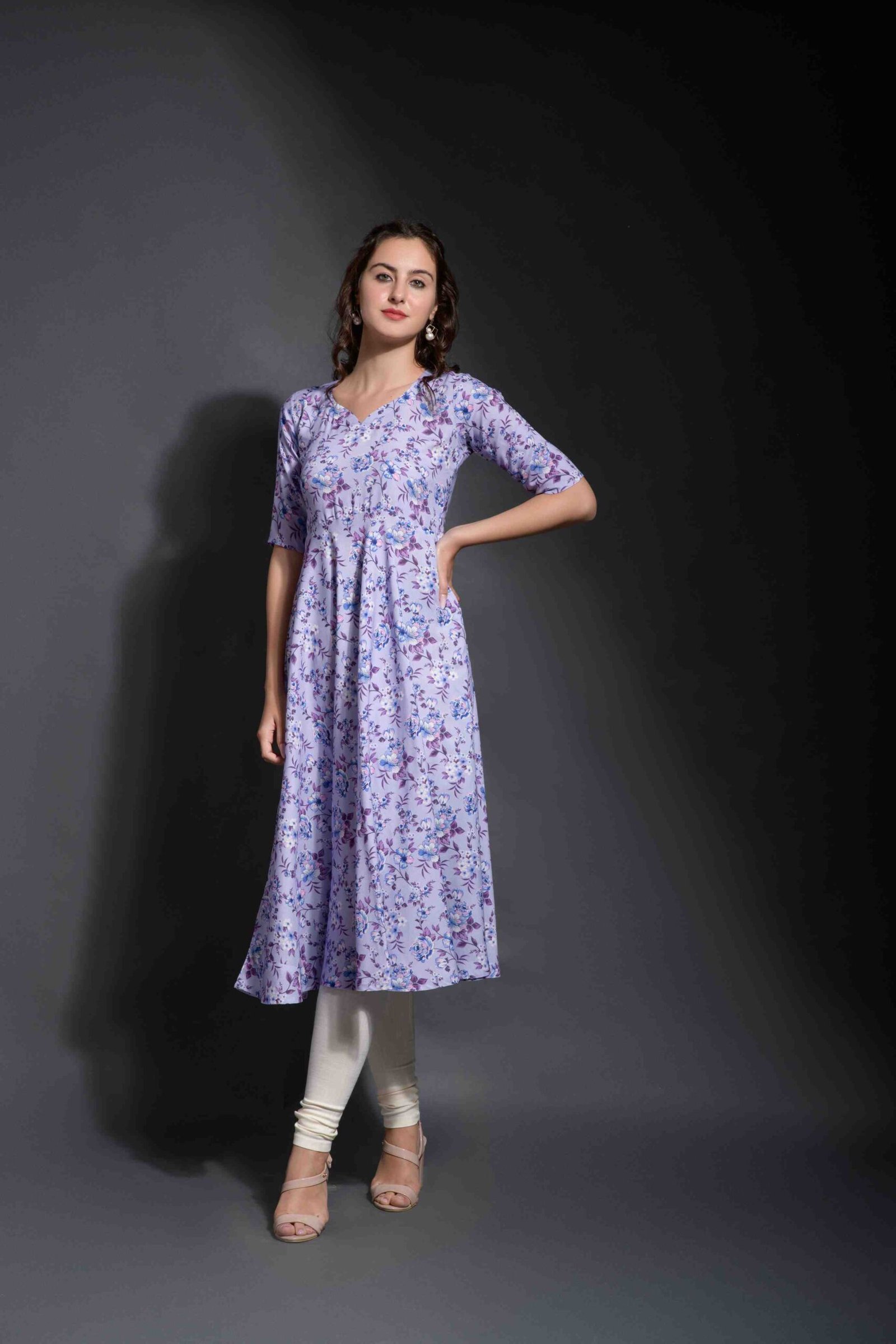Holi, the festival of colors, is a vibrant celebration deeply rooted in Hindu tradition and culture. It marks the arrival of spring and is a time for revelry, merriment, and the spreading of joy. One of the delightful aspects of Holi is the array of colorful outfits worn by celebrants as they partake in the festivities. From traditional attire to practical considerations, Holi outfits encapsulate the spirit of the occasion in every hue and fabric.
White Canvas: The Traditional Choice:
The quintessential Holi outfit is often draped in white kurti. White serves as the perfect canvas for the kaleidoscope of colors that define the festival. Women don white kurta pajamas or kurtas paired with churidar pajamas, while women opt for elegant white salwar kameez or kurtas paired with leggings or kurti for women. This timeless choice not only accentuates the vibrancy of the colors but also holds cultural significance, symbolizing purity and new beginnings.
Comfort and Practicality:
Beyond aesthetics, comfort and practicality are paramount when selecting Holi attire. Given the dynamic nature of the festivities, with participants engaging in spirited bouts of color throwing and water play, comfort is essential. Loose-fitting garments crafted from lightweight, breathable fabrics such as cotton are favored, allowing for ease of movement and ventilation amidst the revelry. Comfortable footwear, such as sneakers or sandals, provides both protection and mobility, ensuring that participants can fully immerse themselves in the joyous chaos of Holi.
The Wisdom of Old Clothes:


In the spirit of practicality, many Holi revelers opt to don old clothes or outfits they don’t mind getting stained with colors. Holi colors, while vibrant and enchanting, can be notoriously stubborn to wash out. By wearing old attire, celebrants can fully embrace the festivities without fear of damaging their cherished garments. This pragmatic approach underscores the carefree and uninhibited nature of Holi, where the joy of celebration supersedes concerns of material possessions.
Accessorizing with Flair:
Accessories play a crucial role in enhancing Holi outfits, adding flair and functionality to celebrants’ ensembles. Colorful dupattas, long scarves often adorned with intricate patterns or embellishments, are a popular choice among women. These versatile accessories can be draped elegantly around the neck or used to shield the hair from stray splashes of color. Sunglasses are another indispensable accessory, offering protection from the vibrant powders and ensuring clear vision amidst the colorful chaos. Additionally, hats or caps serve a dual purpose, shielding the scalp from sun exposure while also adding a touch of style to the ensemble.
Preparation and Protection:
Preparing for Holi extends beyond selecting the perfect outfit; it also involves safeguarding the skin and hair from the potential effects of color. Prior to venturing out to join the festivities, many individuals apply a layer of coconut oil or moisturizer to exposed areas of the skin. This not only helps to protect the skin from the drying effects of color powders but also facilitates easier removal post-celebration. Similarly, coating the hair with oil acts as a protective barrier, preventing color from seeping into the hair shafts and making it easier to wash out afterward.
Celebrating Diversity: Regional Variations:
While white attire is synonymous with Holi celebrations in many regions of India, there exists a rich tapestry of regional variations in Holi outfits. In some parts of India, particularly in the state of Punjab, vibrant traditional attire such as phulkari suits or bright-colored sarees are favored, reflecting the unique cultural heritage of the region. Similarly, in parts of South India, women may don traditional silk sarees adorned with intricate motifs, adding a touch of elegance to the festivities. These regional variations highlight the diversity and richness of Indian culture, showcasing the myriad ways in which Holi is celebrated across the country.
Holi, the Hindu festival of colors celebrated predominantly in India, Nepal, and other regions, is a vibrant and joyous occasion. Traditional Holi outfits often reflect the festive spirit of the occasion while also considering the practicalities of getting drenched in colored powders and water. Here are some common types of Holi outfits:
White Kurta Pajama/Salwar Kameez:
White is a popular choice for Holi attire as it serves as a perfect canvas for the vibrant colors of the festival. Men often wear white kurta pajamas or kurtas with white churidar pajamas, while women opt for white salwar kameez or white kurtas paired with leggings.
Comfortable Clothing:
Since Holi involves a lot of physical activity, including running around, dancing, and playing with colors, comfortable clothing is essential. Loose-fitting clothes made of lightweight and breathable fabrics like cotton are preferred.
Old Clothes: Many people choose to wear old clothes or outfits they don’t mind getting stained with colors. Holi colors can be difficult to wash out, so it’s wise to avoid wearing anything valuable or difficult to clean.
Dupattas and Scarves:
Women often accessorize their Holi outfits with colorful dupattas (long scarves) or scarves that can be draped around the neck or used to cover the head to protect hair from color.
Sunglasses and Headgear: Sunglasses are commonly worn during Holi to protect the eyes from color powder. Additionally, some people wear hats or caps to shield their hair and scalp from colors and sun exposure.
Footwear: Comfortable and closed-toe footwear, such as sneakers or sandals, is advisable to protect the feet from color and water splashes.
Oil or Moisturizer: Before heading out to play Holi, applying a layer of coconut oil or moisturizer on the exposed parts of the skin can help make it easier to wash off the colors afterward.
Overall, the key to Holi outfits is to wear something comfortable, modest, and preferably in white or light colors to enhance the colorful experience of the festival.
Conclusion:
In essence, Holi outfits encapsulate the spirit of the festival, blending tradition, practicality, and vibrancy in a kaleidoscope of colors and fabrics. Whether draped in elegant white attire or adorned with regional embellishments, celebrants come together to revel in the joyous chaos of Holi, embracing the spirit of unity and camaraderie. As colors fill the air and laughter echoes through the streets, Holi outfits serve as a visual testament to the exuberance and vivacity of this beloved festival, uniting people of all backgrounds in a shared celebration of life, love, and laughter.


